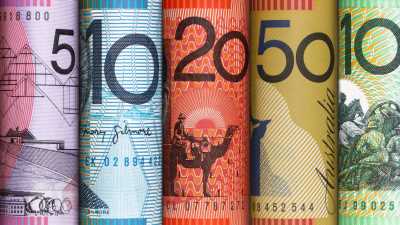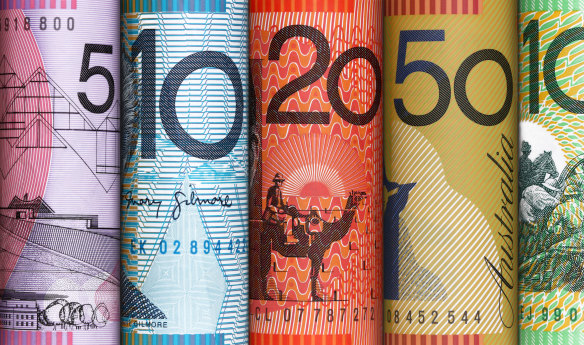Pinkie, piglet, Pammie: what do you call a $5 note?

My radio desk adjoins the ABC Asia Pacific news department. We don’t cross paths much. Local radio seldom intersects with Fijian coups. The Asian team tackles global stories too, from UK and Ukraine, always with a diligent murmur across the cubicles, leaving me to map my weeknight show in peace, everyone sticking to their lanes.
Except last week, when a news delegation arrived at my elbow – Lauren and Tyson – with a money question. A survey, I presumed. A salary audit across the floor, yet their query fixated on words, not wages. Lauren had a $5 note in her hand, and asked me to name it. My feelers sensed a trick question. Tyson clarified, “What’s its nickname?”
Our colourful currency has a range of colourful names, it seems.Credit:Getty
Pinkie? Fivie? Is there an actual nickname? My colleagues seemed short-changed. My market value as an apex word-nerd was slipping. Shamed, I put their stumper onto Twitter, asking the crowd to fill in the blanks, and the crowd didn’t disappoint.
Forget the five, the exercise covered the entire wallet. Even the obvious lobster ($20) and pineapple ($50) had rivals in the guise of the salmon and Colonel Mustard. Paul Smart, a Tasmanian winemaker, insisted his pocket was an apple orchard, from pink lady ($5) to Cox’s orange pippin ($20), from golden delicious ($50) to granny smith ($100).
Fruit was a common flavour among the replies. Shaun Scott fancied berries, moving from blackberry ($5) to blueberry ($10), with strawberry ($20) and grape ($100) astride the pineapple. Compare that to the epicurean Caitlin Fitzsimmons, whose five was taramasalata, unlike a slice of ham (or Devon) for others.
Keeping to menus, and apples, a Twitter respondent in Mr Krabappel shared a story: “A friend’s coding team calls a $5 note the ‘tip note’. They’re all highly paid Unix techs who once paid the bills at uni by delivering food. Hence, they express solidarity with their former Menulog brethren by giving $5 tips.”
Shades of publican William Ryan’s flashback: “In the (very) early ’80s, at nightclub doors, the $5 was known as ‘the purple business card’.” This echoes the notion of $50 being the fun voucher, while Haikal Saadh painted this restaurant scenario: “You don’t have a table? What about… for my friend Edith Cowan?” Elsewhere, Dame Edith is dubbed Mrs Doubtfire.
Piglet, prawn, panther – the $5 note has ample tags. Others include the maroon and the Pammie, after tennis player Pam Shriver (fiver). Rhyming slang recurred throughout the purse, from Stewie (Diver/fiver) to Peter (McKenna/tenner) for the blue swimmer. As for puns, I loved the Ocker gotcha of Pav (Pavarotti-tenor-tenner).
Bluey, Australia’s animated sweetheart, is another alias for $10, the note also known as the heeler, the Banjo, the Smurf, the blue tongue. Doubling down, the $20 has copped both redback and cherry, and the $50 the Hawaii (being the 5-0, after the TV show).
Leaving us with $100, perhaps the most vernacular note in the national skyrocket. Reasons are twofold: firstly, its colour shift from grey to green (or grey nurse to watermelon in the glossary), and second, its perceived rarity. Hence, we see bunyip and alien – evoking mythical sightings – alongside Kermit, kale, snotter, choko and crocodile. Art history academic Callum Reid suggests the avocado ($100) should now be “called the smashed avo to represent its increased value.”
Jolly green giant, says the Macquarie, is another label, plus Bradman and Dougie (Mawson). By that stage, Lauren and Tyson had long since returned to their Asia Pacific beat, just as I’d resumed my radio duties – all of us wiser about colloquial cash, if not a little spent.
A cultural guide to going out and loving your city. Sign up to our Culture Fix newsletter here.
To read more from Spectrum, visit our page here.
Most Viewed in Culture
From our partners
Source: Read Full Article
